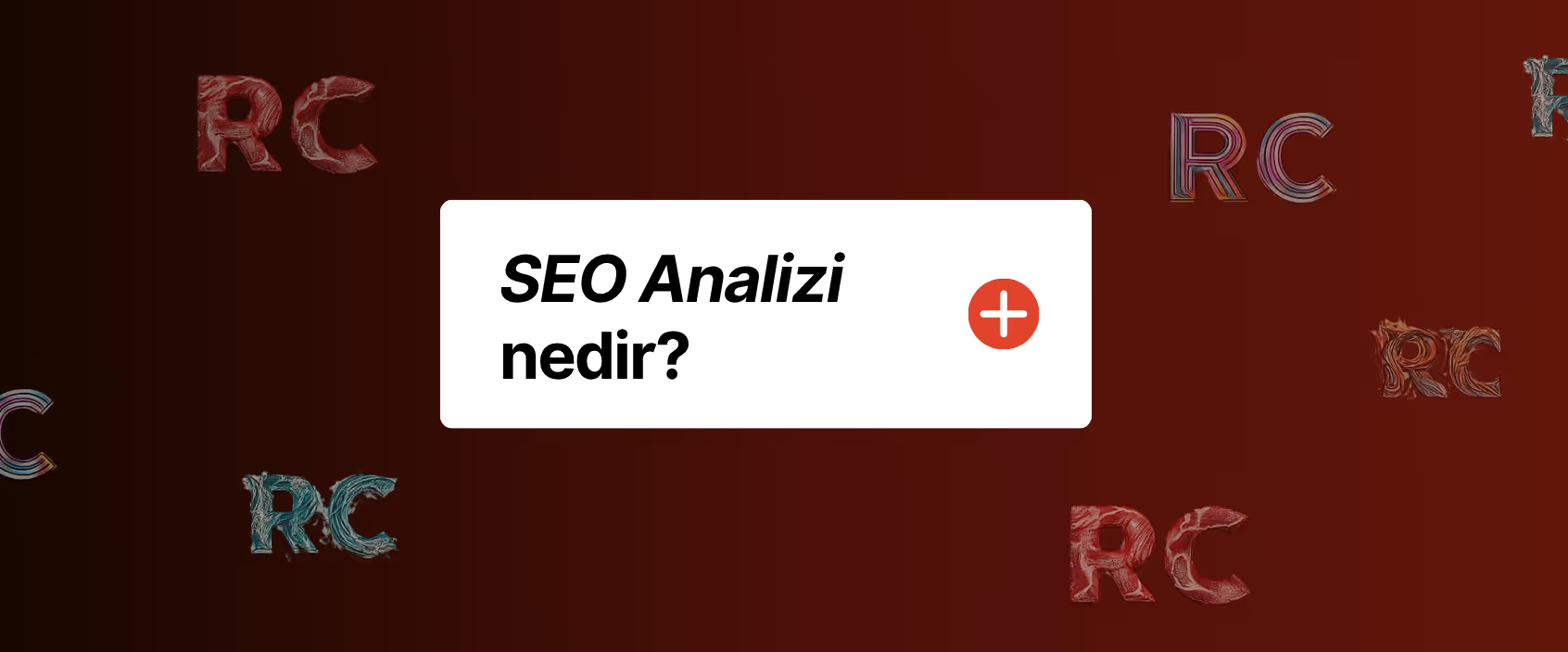Being visible on the Internet is no longer a choice, it is a basic requirement to exist in the digital world. Why can't your potential customers find you? The answer is simple: SEO analysis It wasn't done or done right. The first step to evaluate your website's performance in search engines and optimize your strategy SEO analysisdir.
SEO analysisevaluates many elements from your site's technical infrastructure to content structure, from page speed optimization to backlink quality. In this way, you will learn in detail how search engines see you and how users interact with your site.
Why is SEO Analysis Necessary?
Getting a website up and running is not enough for digital success. To increase the visibility of your website, reach the right audience and achieve sustainable traffic SEO analysis It is essential to do it. Without analysis, there is no strategy.
Why is SEO analysis important?
- Reveals hidden technical errors.
Technical details such as page speed, mobile compatibility, indexing issues directly affect success. - Strengthens your content strategy.
You can see which keywords you are missing, which pages are underperforming. - Provides a competitive advantage.
With competitor analysis, you can understand where you stand in the industry and where you need to get to.
At Roicool, we offer intelligent analytics that work not only with technical data, but also with user behavior to increase the visibility of brands. Because successful SEO should work not only for Google, but also for people.
What Stages Does SEO Analysis Include?
SEO analysisis not a superficial control, but a multi-layered process. A truly effective analysis comprehensively addresses the following areas:
Technical SEO Analysis
Site Speed
Page load time is a critical metric for both user experience and Google ranking algorithms. Sites that load slowly increase bounce rate, which negatively affects your ranking. In SEO analysis, performance is evaluated using page speed tools (such as Google PageSpeed, GTMetrix) and offers the necessary optimization recommendations.
Mobile Compatibility
In a digital environment where traffic from mobile devices is increasing day by day, your website needs to run smoothly on all screen sizes. During SEO analysis, mobile compatibility tests are performed, responsive design deficiencies are identified and Google's Mobile Priority Indexing policy is complied with.
HTTPS Control
A secure web experience is indispensable for both users and search engines. The use of HTTPS is a ranking criterion for SEO. Within the scope of SEO analysis, points such as whether the SSL certificate is correctly defined, whether all pages are running through a secure connection, are examined.
Sitemap and Robots.txt File
The sitemap (sitemap.xml) shows search engine bots the structure of your site. Robots.txt, on the other hand, controls which pages to scan. In SEO analysis, the presence of these two files, their proper configuration and their update are checked in detail.
Broken Links and Redirection Errors
404 errors, broken links, and misconfigured redirects negatively affect both the user experience and your SEO score. SEO analysis detects these errors and recommends the necessary edits to create a clean link structure.
In-Page (On-Page) SEO Analysis
Title and Meta Description Tags
These tags, which determine how each page will appear in search engines, are the most basic building blocks of SEO. SEO analysis evaluates the impact of title length, keyword usage, and description tags on click-through rate.
Keyword Density
It analyzes how much your content matches the keywords you are targeting. Too little or too much use of keywords can reduce SEO performance. The analysis suggests a natural and effective distribution of keywords in the contents.
H1-H2 Label Usage
Title structures show search engines the hierarchy and order of importance of your content. In SEO analysis, it is checked whether the H1 tag is used correctly and whether subheadings such as H2-H3 are logically placed within the page.
Visual Subtags (Alt Text)
In order for images to be “readable” by search engines, their subtags must be defined. In SEO analysis, subtags that are missing or do not contain keywords are identified and recommendations are offered for improving visual SEO.
Internal Linking Structure
The links that your site gives in itself, in addition to directing users, allow search engine bots to better understand the site. SEO analysis checks whether internal links are sufficient and whether they offer a natural structure.
Off-Page (Off-Page) SEO Analysis
Backlink Quality and Quantity
A site's reputation is largely shaped by the links it receives. SEO analysis not only evaluates how many backlinks there are, but also what sources these links come from and how authoritative they are. It is recommended to clean it by identifying poor-quality or spam links.
Social Signals
Your site's visibility and shares on social media also indirectly affect SEO. SEO analysis takes into account your social media links, content engagement rates, and traffic from social posts.
Brand Awareness
Not only links, but also how your brand is referred to in the online world contributes to SEO. SEO analysis examines data such as how often your brand name is mentioned, which platforms it appears on, and search volume.
Competitor Analysis
Keywords Competitors Ranked
Knowing in which keywords competitors that appeal to the same audience as you stand out makes a big difference in your content strategy. With SEO analysis, the words that competitors have ranked are identified and you are presented with a custom roadmap with this data.
Content Length and Structure
Details such as how many words competitors use per page, and which subheadings they prefer in content, are analyzed to improve your content strategy. Search engines often prefer comprehensive and structured content.
Link Profiles
From which sites competing sites receive backlinks, dofollow-nofollow rates and distribution of links are analyzed. This information is an important reference when creating your link building strategy.
Presented by Roicool SEO analysis serviceprovides in-depth study in all four of these areas. Our goal is to show not only the problems, but also the opportunities.
Data-driven SEO is many times more powerful than randomized optimization. Accurate analysis is the compass of digital success.
How Much Does SEO Analysis Service Cost?
One of the most curious questions when investing in SEO is: SEO analysis prices what is it determined by? Prices usually vary based on the scope of analysis, the size of the site, and technical needs.
Brands that purchase this service typically see an increase of up to 30% in organic traffic within 3 months. Because the correct diagnosis is the first step to the right solution.
What to do after SEO analysis?
SEO analysis is not only done to see the current situation. The main value is revealed in the steps taken after the analysis. At Roicool, we present a clear strategy that must be acted upon after the analysis.
Recommended actions after analysis:
- Fixing technical errors (site speed, mobile issues, etc.)
- Updating or rewriting content
- Preparing a content plan in accordance with new keywords
- Creation of backlink strategy
- Reorganization of page structures (heading tags, linking, etc.)
Remember: SEO is not a one-time process, but a constantly evolving process. Regular analysis is therefore a must for a successful digital strategy.
Conclusion: There is no strategy without SEO analysis
SEO analysisprevents random action in digital marketing. If you want to achieve your goals, you must know where you stand and where you need to go. That's why SEO analysisshould be in the first place on the roadmap of each brand.
At Roicool, we don't just do analysis; we turn that analysis into meaningful strategies. If you also want to improve your digital performance, contact us.
“Data-driven SEO produces results. Analyze with Roicool, stand out.”










